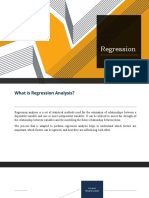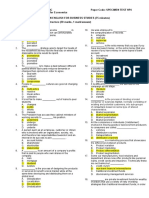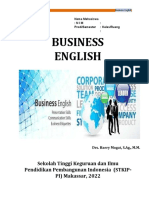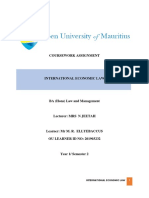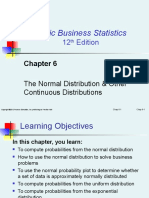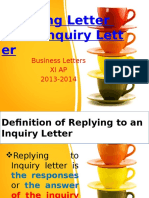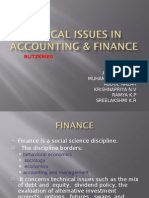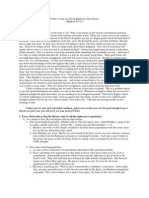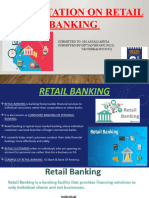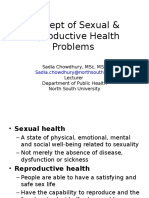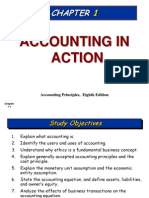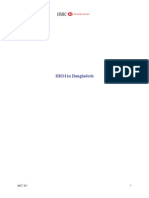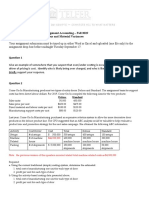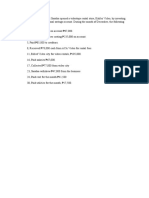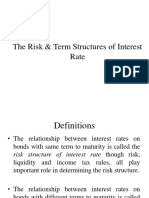Intermediate Accounting
Intermediate Accounting
Uploaded by
jtopuCopyright:
Available Formats
Intermediate Accounting
Intermediate Accounting
Uploaded by
jtopuOriginal Description:
Copyright
Available Formats
Share this document
Did you find this document useful?
Is this content inappropriate?
Copyright:
Available Formats
Intermediate Accounting
Intermediate Accounting
Uploaded by
jtopuCopyright:
Available Formats
Chapter
1-1
C H A P T E R 1
FINANCIAL ACCOUNTING AND
ACCOUNTING STANDARDS
Chapter
1-2
Is the means by which we measure and describe
economic activities
Is the way of recording, analyzing and
summarizing transactions of an entity.
It is an information system for decision makers.
One of the roles of an accountant is to measure
the revenue and expenditure of an entity.
What is Accounting
Chapter
1-3
Managers and Directors
Shareholders
Creditors or Finance Providers
Trade Contracts: eg suppliers, customers
NBR
Employees
Economic Planners: eg Financial Analysts,
advisers
Governmental Agencies: eg. Bureau of Statistics
The Public
Users of Accounting Data
Chapter
1-4
LO 1 Identify the major financial statements and other means of financial reporting..
Financial Statements and Financial Reporting
Essential characteristics of accounting are:
(1) the identification, measurement, and
communication of financial information about
(2) economic entities to
(3) interested parties.
Chapter
1-5
Financial
Information
Accounting?
Identifies
and
Measures
and
Communicates
Balance Sheet
Income Statement
Statement of Cash
Flows
Statement of
Owners or
Stockholders Equity
Note Disclosures
Presidents letter
Prospectuses,
SEC Reporting
News releases
Forecasts
Environmental
Reports
Etc.
GAAP Not GAAP
Financial Statements Additional Information Economic Entity
LO 1 Identify the major financial statements and other means of financial reporting..
Financial Statements and Financial Reporting
Chapter
1-6
Accounting and Capital Allocation
Resources are limited. Efficient use of resources often
determines whether a business thrives.
Financial
Reporting
Information to help
users with capital
allocation decisions.
Users
Investors, creditors,
and other users
Capital Allocation
The process of
determining how and
at what cost money
is allocated among
competing interests.
LO 2 Explain how accounting assists in the efficient use of scare resources.
Illustration 1-1
Capital Allocation Process
Chapter
1-7
An effective process of capital allocation is critical to a
healthy economy, which
a. promotes productivity.
b. encourages innovation.
c. provides an efficient and liquid market for buying
and selling securities.
d. All of the above.
Accounting and Capital Allocation
LO 2 Explain how accounting assists in the efficient use of scare resources.
Review
Chapter
1-8
Challenges Facing Financial Accounting
Nonfinancial Measurements
Forward-looking Information
Soft Assets (Intangibles)
Timeliness
LO 3 Describe some of the challenges facing accounting.
Chapter
1-9
Financial reporting should provide information that:
(a) is useful to present and potential investors and creditors and
other users in making rational investment, credit, and similar
decisions.
(b) helps present and potential investors and creditors and other
users in assessing the amounts, timing, and uncertainty of
prospective cash receipts.
(c) clearly portrays the economic resources of an enterprise, the
claims to those resources, and the effects of transactions,
events, and circumstances that change its resources and
claims to those resources.
Objectives of Financial Accounting
LO 4 List the objectives of financial reporting.
Chapter
1-10
Need to Develop Standards
Various users
need financial
information
The accounting profession
has attempted to develop a
set of standards that are
generally accepted and
universally practiced.
Financial Statements
Balance Sheet
Income Statement
Statement of Stockholders Equity
Statement of Cash Flows
Note Disclosure
Generally Accepted
Accounting Principles
(GAAP)
LO 5 Explain the need for accounting standards.
Chapter
1-11
Parties Involved in Standard Setting
Three organizations:
Securities and Exchange Commission (SEC)
American Institute of Certified Public
Accountants (AICPA)
Financial Accounting Standards Board (FASB)
LO 6 Identify the major policy-setting bodies and
their role in the standard-setting process.
Chapter
1-12
FASB relies on two basic premises:
(1) Responsive to entire economic community
(2) Operate in full view of the public
Due Process
Step 1 = Topic placed on agenda
Step 2 = Research conducted and Discussion Memorandum
issued.
Step 3 = Public hearing
Step 4 = Board evaluates research, public response and
issues Exposure Draft
Step 5 = Board evaluates responses and issues final
Statement of Financial Accounting Standard
LO 6 Identify the major policy-setting bodies and
their role in the standard-setting process.
Chapter
1-13
Generally Accepted Accounting Principles
Those principles that have substantial authoritative
support.
Major sources of GAAP are:
FASB Standards, Interpretations, and Staff Positions
APB Opinions
AICPA Accounting Research Bulletins
LO 7 Explain the meaning of generally accepted accounting principles
(GAAP) and the role of the Codification for GAAP.
Chapter
1-14
Issues in Financial Reporting
Standard Setting in a Political Environment
Accounting standards are as much a product of
political action as they are of careful logic or
empirical findings.
LO 8 Describe the impact of user groups on the rule-making process.
Chapter
1-15
FASB
Preparers
(e.g., FEI)
Financial
Community
Government
(SEC, IRS, other
agencies)
Industry
Associations
Business Entities
CPAs and
Accounting Firms
AICPA (AcSEC)
Academicians
Investing Public
Accounting standards,
interpretations, and bulletins
Standard Setting
Illustration 1-6
User Groups that Influence
Accounting Standards
LO 8 Describe the impact of user groups on the rule-making process.
Chapter
1-16
Issues in Financial Reporting
International Accounting Standards
Two sets of standards accepted for international use:
U.S. GAAP, issued by the FASB
International Financial Reporting Standards
(IFRS), issued by the IASB
FASB and IASB recognize that
global markets will best be
served if only one set of GAAP
is used.
LO 8 Describe the impact of user groups on the rule-making process.
Chapter
1-17
Issues in Financial Reporting
Ethics in the Environment of Financial Accounting
In accounting, we frequently encounter ethical
dilemmas.
GAAP does not always provide an answer
Doing the right thing is not always easy or obvious
LO 9 Understand issues related to ethics and financial accounting.
Chapter
1-18
Diversity in Practice
iGAAP includes the standards, referred to as International
Financial Reporting Standards (IFRS), developed by the IASB.
Differences between U.S. GAAP and iGAAP exist because of
different user needs.
iGAAP tends to be simpler and less stringent than U.S. GAAP.
Regulators have recently eliminated the need for foreign
companies that trade shares in U.S. markets to reconcile their
accounting with U.S. GAAP.
You might also like
- Taco Bell Case AnalysisDocument3 pagesTaco Bell Case AnalysisShivam GoyalNo ratings yet
- Bangla LinkDocument18 pagesBangla LinkjtopuNo ratings yet
- Principles of AccountingDocument4 pagesPrinciples of AccountingjtopuNo ratings yet
- Business Department: BTEC Tech Award in EnterpriseDocument25 pagesBusiness Department: BTEC Tech Award in EnterpriseNatalia SkowronNo ratings yet
- PDFDocument3 pagesPDFSelinnur GöklerNo ratings yet
- INTERESTDocument37 pagesINTERESTEnock MaunyaNo ratings yet
- Chapter Two Financial Institutions and Their Operations PPTDocument139 pagesChapter Two Financial Institutions and Their Operations PPTtsigemulugetaNo ratings yet
- English For BusinessDocument34 pagesEnglish For BusinessĐìnhHòa100% (2)
- AuditingDocument24 pagesAuditingmekonnin tadesseNo ratings yet
- The Extent of Knowledge and Participation of The Staff Nurses On The Visual Infusion Phlebitis Program of Saint Anthony College HospitalDocument89 pagesThe Extent of Knowledge and Participation of The Staff Nurses On The Visual Infusion Phlebitis Program of Saint Anthony College HospitalWinj BudayNo ratings yet
- Correlational Research Design - 20 Sep 19Document38 pagesCorrelational Research Design - 20 Sep 19Hasna Abdullah100% (1)
- Income StatementDocument10 pagesIncome StatementRj GundaNo ratings yet
- Regression Analysis: Predict The Value of The Dependent Variable Given The Value of The Independent VariableDocument16 pagesRegression Analysis: Predict The Value of The Dependent Variable Given The Value of The Independent VariableAlona Nay Calumpit AgcaoiliNo ratings yet
- Final Teacher Engagement Published ResearchDocument54 pagesFinal Teacher Engagement Published ResearchPhuongNo ratings yet
- RegressionDocument25 pagesRegressionABY MOTTY RMCAA20-23No ratings yet
- Nonparametric Methods: Chi-Square ApplicationsDocument21 pagesNonparametric Methods: Chi-Square ApplicationsnitatitutetoNo ratings yet
- Determining Appropriate Sample SizeDocument17 pagesDetermining Appropriate Sample SizeMelodia GoNo ratings yet
- Quantitative Research Design Dr. Azadeh AsgariDocument31 pagesQuantitative Research Design Dr. Azadeh AsgariDr. Azadeh AsgariNo ratings yet
- Chap11 - Chi-Square Tests and Nonparametric TestsDocument36 pagesChap11 - Chi-Square Tests and Nonparametric TestsAhmad MudrikNo ratings yet
- CV 20Document1 pageCV 20Mnurul HudaNo ratings yet
- English For Mba NewDocument80 pagesEnglish For Mba NewMohammed YassinNo ratings yet
- Regression AnalysisDocument25 pagesRegression AnalysisUrvashi HandaNo ratings yet
- Sadik: Graphic DesignerDocument5 pagesSadik: Graphic DesignerRomaRio Tambunan100% (1)
- Ict in Language LearningDocument11 pagesIct in Language Learningrineng2312No ratings yet
- Using Questionnaires in Education ResearchDocument10 pagesUsing Questionnaires in Education ResearchMonMaNo ratings yet
- How To Please GodDocument7 pagesHow To Please GodJoe Fajiculay100% (1)
- CT P Ueh: SECTION 1: Vocabulary and Structure (30 Marks, 1 Mark/answer)Document7 pagesCT P Ueh: SECTION 1: Vocabulary and Structure (30 Marks, 1 Mark/answer)Quỳnh NhưNo ratings yet
- Makalah English For Economic According To ExpertDocument5 pagesMakalah English For Economic According To Expertburg3r24No ratings yet
- BC-3 (7 Cs of Business Communication)Document48 pagesBC-3 (7 Cs of Business Communication)Raza SamiNo ratings yet
- Sample Test Hp4ctttDocument5 pagesSample Test Hp4ctttDUONG LE THI THUYNo ratings yet
- Characteristics of LettersDocument22 pagesCharacteristics of LettersAndres Sheila Mae Q.No ratings yet
- Types of AuditDocument14 pagesTypes of Auditbhaveshjaiin50% (6)
- Business English: Sekolah Tinggi Keguruan Dan Ilmu Pendidikan Pembangunan Indonesia (STKIP-PI) Makassar, 2022Document64 pagesBusiness English: Sekolah Tinggi Keguruan Dan Ilmu Pendidikan Pembangunan Indonesia (STKIP-PI) Makassar, 2022Hamsyah 97No ratings yet
- Midterm Business LetterDocument48 pagesMidterm Business LetterJanine GulmaticoNo ratings yet
- Borisova L Speaking Legal EnglishDocument70 pagesBorisova L Speaking Legal Englishantonello.casillasNo ratings yet
- BankingDocument21 pagesBankingGaurav AgarwalNo ratings yet
- Investment: BY, Sweeya.S 15e11a0107Document15 pagesInvestment: BY, Sweeya.S 15e11a0107Sweeya SankuruNo ratings yet
- Assignment International Economic LawDocument16 pagesAssignment International Economic LawreazNo ratings yet
- Business Letters Report, Job CVDocument16 pagesBusiness Letters Report, Job CVBHARTENDU KUMARNo ratings yet
- Nature of Regression AnalysisDocument19 pagesNature of Regression AnalysisjspinkuNo ratings yet
- Chapter 6 The Normal Distribution Other Continuous DistributionsDocument66 pagesChapter 6 The Normal Distribution Other Continuous DistributionsTasya AsdigaNo ratings yet
- Application LetterDocument13 pagesApplication LetterKhailah Putri0% (1)
- Chapter 2 Accountants As Business AnalystsDocument43 pagesChapter 2 Accountants As Business AnalystsRotanak UmNo ratings yet
- Questionnaire Development and ValidationDocument20 pagesQuestionnaire Development and ValidationRemelie Roque RoblesNo ratings yet
- Reply To An Inquiry LetterDocument9 pagesReply To An Inquiry LetterMelissa Gan Yu QinNo ratings yet
- Testing Reliability of QuestionsDocument18 pagesTesting Reliability of QuestionsLiza Ricah AvilaNo ratings yet
- Lecture 4, 7 C's OfcommunicationDocument33 pagesLecture 4, 7 C's OfcommunicationAli JuttNo ratings yet
- Ethics in Acc & FinanceDocument25 pagesEthics in Acc & FinanceSagar SalimNo ratings yet
- Effective Communications With 7CsDocument63 pagesEffective Communications With 7CsĐạt DevelopmentNo ratings yet
- MSQ-13 - Overview of The MS Practice by The CPADocument7 pagesMSQ-13 - Overview of The MS Practice by The CPARick Marl PadenNo ratings yet
- AuditingDocument27 pagesAuditingaazamchNo ratings yet
- Pre Submission Presentation - PrashantDocument37 pagesPre Submission Presentation - Prashantshiv kumar shrivastavaNo ratings yet
- I Didn' T Come To Call The Righteous, But SinnersDocument5 pagesI Didn' T Come To Call The Righteous, But SinnersGrace Church ModestoNo ratings yet
- CPW4 Business Writing WRT401 PPSlides V1.3Document118 pagesCPW4 Business Writing WRT401 PPSlides V1.3Jelta James100% (1)
- 07 Relation AnalysisDocument88 pages07 Relation AnalysispradeepNo ratings yet
- Ta TCNH 1Document7 pagesTa TCNH 1Nguyen Linh ChiNo ratings yet
- Balance Sheet PPT 183Document38 pagesBalance Sheet PPT 183Rita SinghNo ratings yet
- To Obey Is Better Than SacrificeDocument7 pagesTo Obey Is Better Than SacrificeGrace Church ModestoNo ratings yet
- Business Communication Chapter 13 - 19Document14 pagesBusiness Communication Chapter 13 - 19abbasgass48No ratings yet
- On Retail BankingDocument26 pagesOn Retail BankingHarpreetNo ratings yet
- Correlation and Regression AnalysisDocument29 pagesCorrelation and Regression AnalysisKeirah LorenzNo ratings yet
- Chapter 5 Descriptive Statistics in SPSSDocument35 pagesChapter 5 Descriptive Statistics in SPSSSaurabhNo ratings yet
- Writing Business Letters: Formats, Styles, TypesDocument22 pagesWriting Business Letters: Formats, Styles, TypesrhimankNo ratings yet
- Financial Accounting and Accounting StandardDocument18 pagesFinancial Accounting and Accounting StandardZahidnsuNo ratings yet
- Financial Accounting and Accounting StandardsDocument31 pagesFinancial Accounting and Accounting StandardsIrwan JanuarNo ratings yet
- Financial Statement Analysis of "Beximco Pharma": Submitted ToDocument3 pagesFinancial Statement Analysis of "Beximco Pharma": Submitted TojtopuNo ratings yet
- Sexual & Reproductive HealthDocument16 pagesSexual & Reproductive Healthjtopu100% (1)
- Chapter 1Document44 pagesChapter 1jtopuNo ratings yet
- Professional Development For Strategic ManagersDocument14 pagesProfessional Development For Strategic ManagersjtopuNo ratings yet
- Professional Development For STRATEGIC MANAGERSDocument16 pagesProfessional Development For STRATEGIC MANAGERSFred Chukwu75% (4)
- Reasons For Choosing This Particular Research TopicDocument2 pagesReasons For Choosing This Particular Research TopicjtopuNo ratings yet
- HSBCDocument31 pagesHSBCjtopuNo ratings yet
- Test Bank BarringerDocument16 pagesTest Bank BarringerjtopuNo ratings yet
- Barringer E3 PPT 08Document35 pagesBarringer E3 PPT 08jtopuNo ratings yet
- Test Bank BarringerDocument16 pagesTest Bank BarringerjtopuNo ratings yet
- Project Proposal - Labor Union 2003Document6 pagesProject Proposal - Labor Union 2003jtopuNo ratings yet
- Questionnaire: This Questionnaire Is Going To Be Kept Confidential Under Any CircumstancesDocument4 pagesQuestionnaire: This Questionnaire Is Going To Be Kept Confidential Under Any CircumstancesjtopuNo ratings yet
- Strategic MarketingDocument3 pagesStrategic MarketingjtopuNo ratings yet
- MID2 BhoogiJhoogiDocument59 pagesMID2 BhoogiJhoogijtopuNo ratings yet
- "Partex Group": (The Beginning )Document34 pages"Partex Group": (The Beginning )jtopuNo ratings yet
- Presented By: Safwan Dawood Shams # 093-0670-530 Sohidul Hoque # 093-0385-030Document12 pagesPresented By: Safwan Dawood Shams # 093-0670-530 Sohidul Hoque # 093-0385-030jtopuNo ratings yet
- Strategic MarketingDocument3 pagesStrategic MarketingjtopuNo ratings yet
- Project Assignment HRMDocument19 pagesProject Assignment HRMjtopuNo ratings yet
- Case MKTDocument6 pagesCase MKTjtopuNo ratings yet
- International Journal of Managing Value and Supply Chains (IJMVSC)Document2 pagesInternational Journal of Managing Value and Supply Chains (IJMVSC)William ScottNo ratings yet
- Internal ControlDocument6 pagesInternal ControlSumbul SammoNo ratings yet
- 6 SigmaDocument26 pages6 SigmaGargiNo ratings yet
- Internship ReportDocument35 pagesInternship ReportKunal ChandelNo ratings yet
- ADM3346 Assignment 2 Fall 2019 Revised With Typos CorrectdDocument3 pagesADM3346 Assignment 2 Fall 2019 Revised With Typos CorrectdSam FishNo ratings yet
- Strategic Marketing Management - BDocument16 pagesStrategic Marketing Management - BShazrina SharukNo ratings yet
- Rural Marketing Question Bank 2011Document4 pagesRural Marketing Question Bank 2011Vijay KumarNo ratings yet
- Commodity Exchange: Lakshminarayanan Alaguraja Advocate Altacit GlobalDocument18 pagesCommodity Exchange: Lakshminarayanan Alaguraja Advocate Altacit GlobalHarvinder Singh DuttaNo ratings yet
- OPMT Final Exam Guide Q5Document5 pagesOPMT Final Exam Guide Q5jancnambliNo ratings yet
- 4.0 Environment of OrganizationsDocument23 pages4.0 Environment of OrganizationsNyah ResisNo ratings yet
- Example of BookkepingDocument8 pagesExample of BookkepingMathew Visarra0% (1)
- Chapter Iso Quant CurvesDocument9 pagesChapter Iso Quant CurvesSajid AlviNo ratings yet
- Business Unit 4Document14 pagesBusiness Unit 4kaos 99No ratings yet
- Purchase Order: PO00 - PO OverviewDocument12 pagesPurchase Order: PO00 - PO OverviewobNo ratings yet
- Tetra India Case SCOMCDocument9 pagesTetra India Case SCOMCVarun BansalNo ratings yet
- C01 First Test (Classification and Behaviour of Cost)Document5 pagesC01 First Test (Classification and Behaviour of Cost)Zaira Anees100% (1)
- Financial and OPM Questioners Sample For BBIDocument16 pagesFinancial and OPM Questioners Sample For BBIToni TriyuliantoNo ratings yet
- Management 122 Course XXXXZAXReader - Rev J - SolutionsDocument43 pagesManagement 122 Course XXXXZAXReader - Rev J - SolutionsWOw WongNo ratings yet
- The Impact of Quality and Price On The Loyalty of Electronic Money Users - Empirical Evidence From IndonesiaDocument11 pagesThe Impact of Quality and Price On The Loyalty of Electronic Money Users - Empirical Evidence From IndonesiaSalvador RamirezNo ratings yet
- Fundamentals of Equity Securities 2018Document59 pagesFundamentals of Equity Securities 2018Kim PeligrinoNo ratings yet
- Methods of Site ValuationDocument10 pagesMethods of Site ValuationNayeeSochNo ratings yet
- APR Part 2 Marking RubricDocument2 pagesAPR Part 2 Marking Rubricwanthing88No ratings yet
- Greenhaven Road Value - Halogen Software FINALDocument24 pagesGreenhaven Road Value - Halogen Software FINALCanadianValue100% (1)
- Interest Rate Term and Risk StructureDocument19 pagesInterest Rate Term and Risk StructureMohan AgrawalNo ratings yet
- 7ps of Service OrganizationDocument4 pages7ps of Service OrganizationtaijulshadinNo ratings yet
- Tutorial 5 Introduction To Business EconomicsDocument4 pagesTutorial 5 Introduction To Business EconomicsCw ChenNo ratings yet
- MS - Unit - Iv-1Document25 pagesMS - Unit - Iv-1VELU KNo ratings yet














